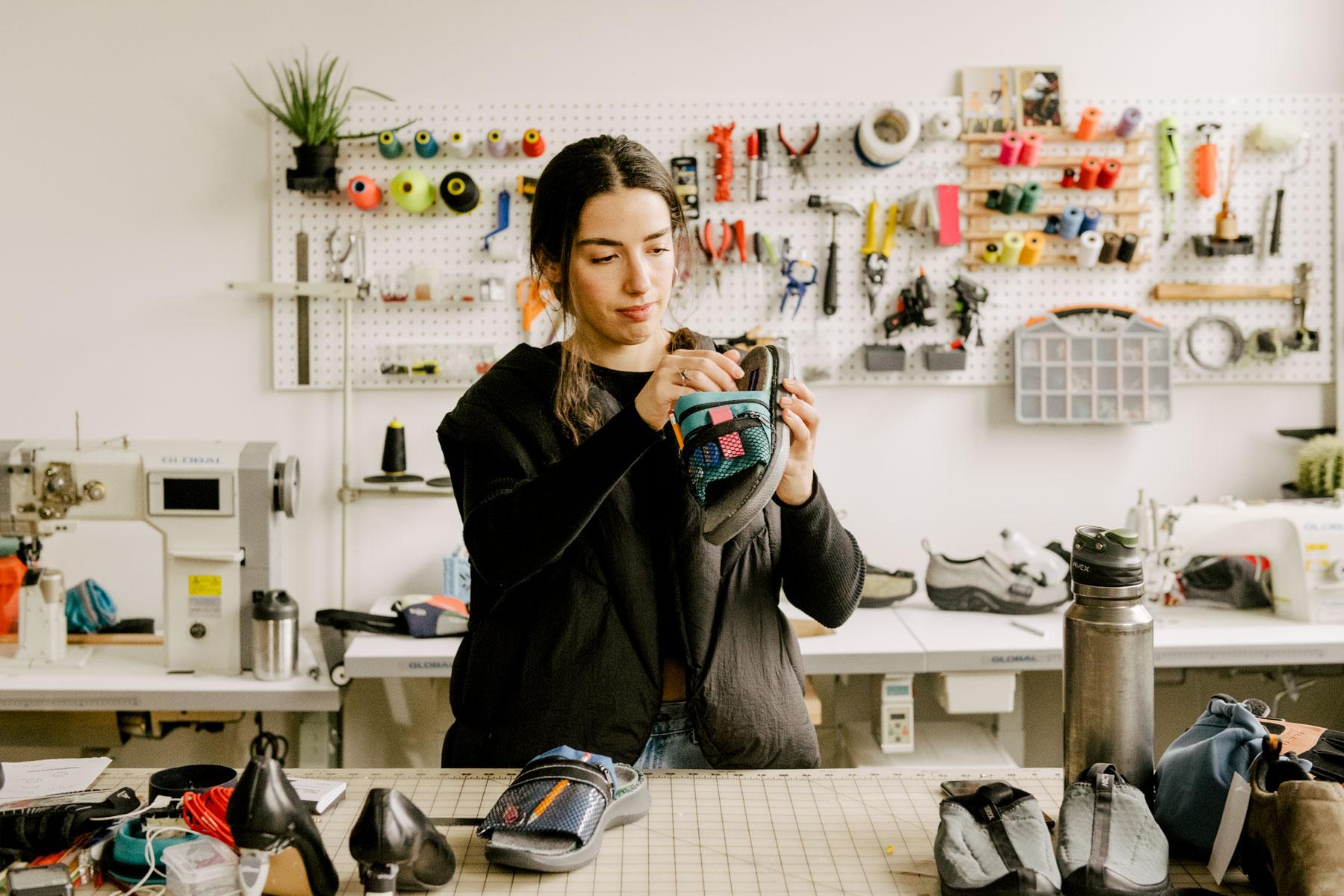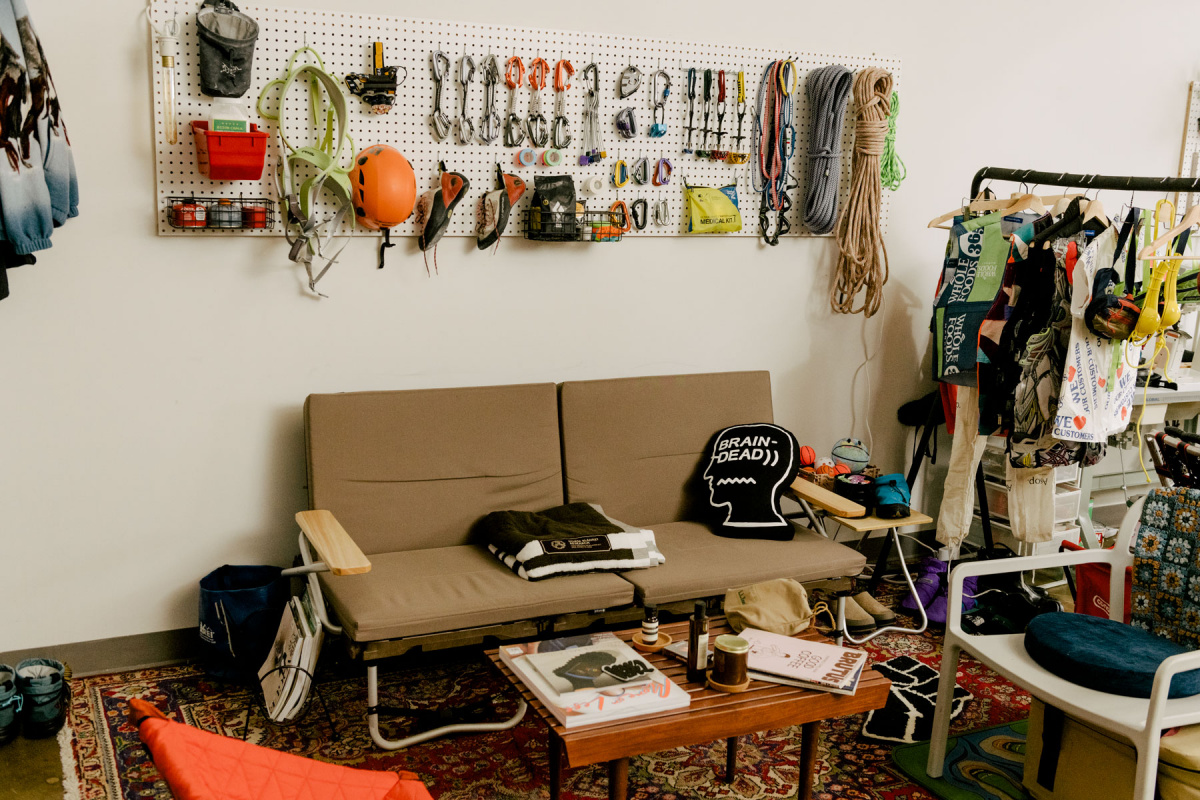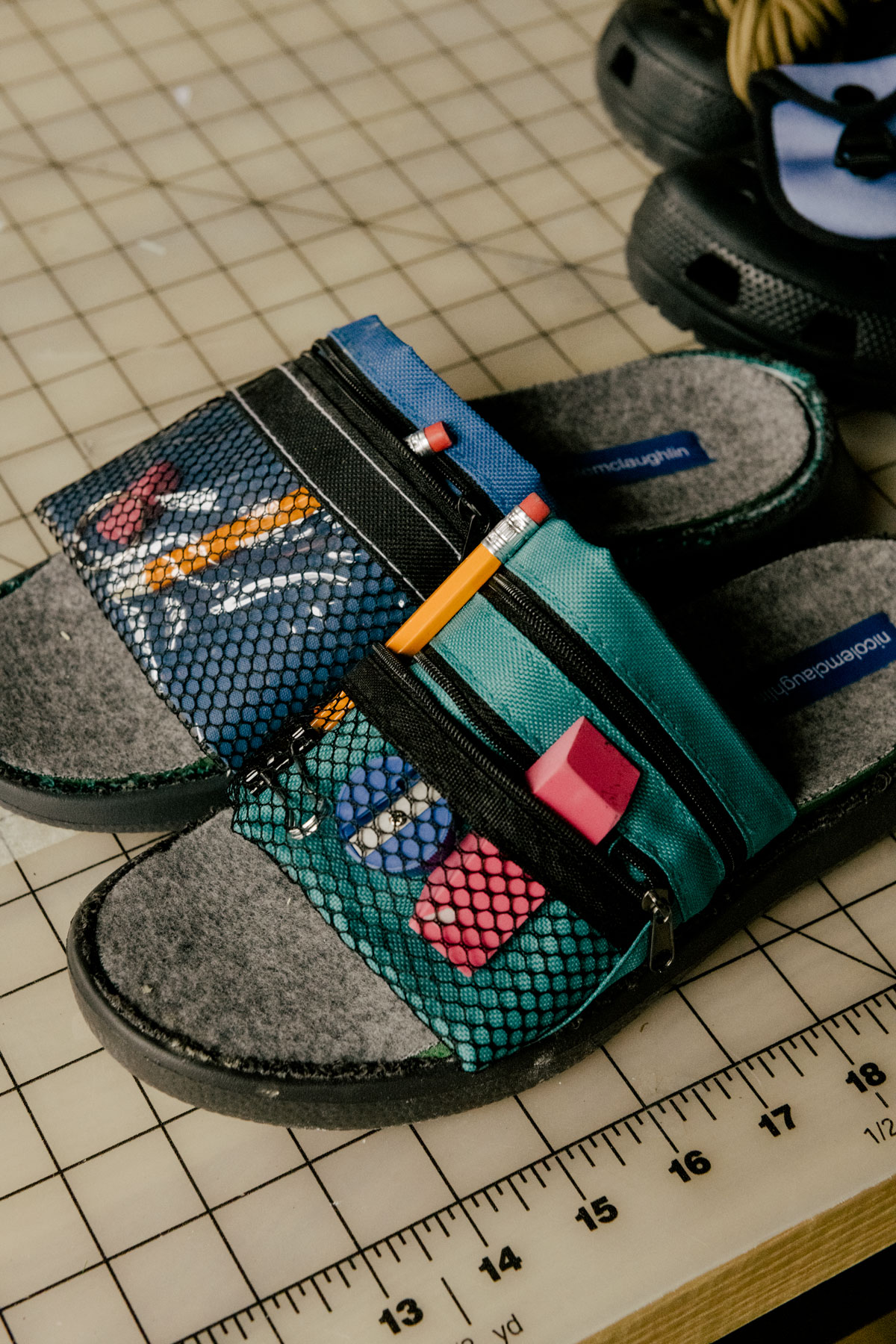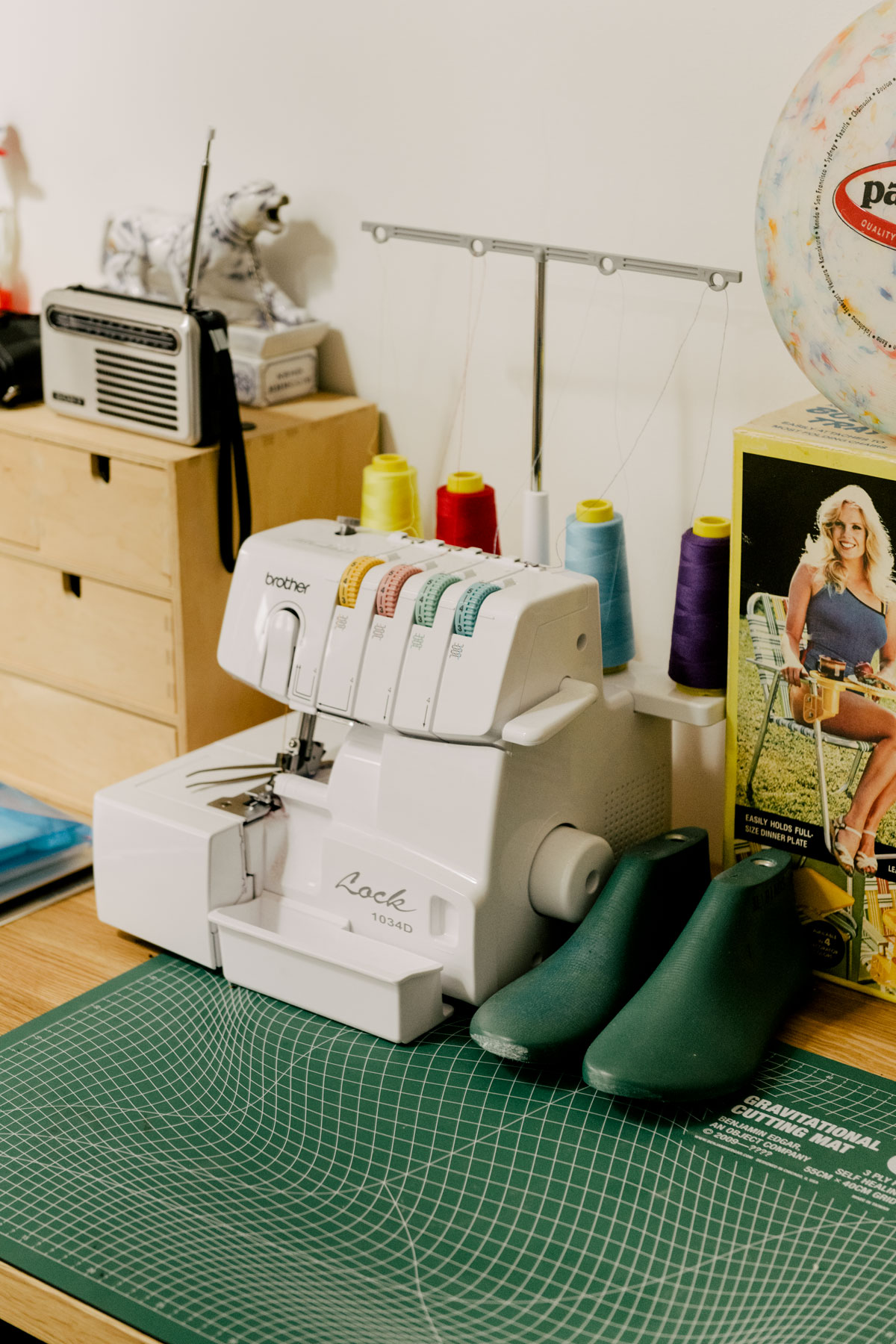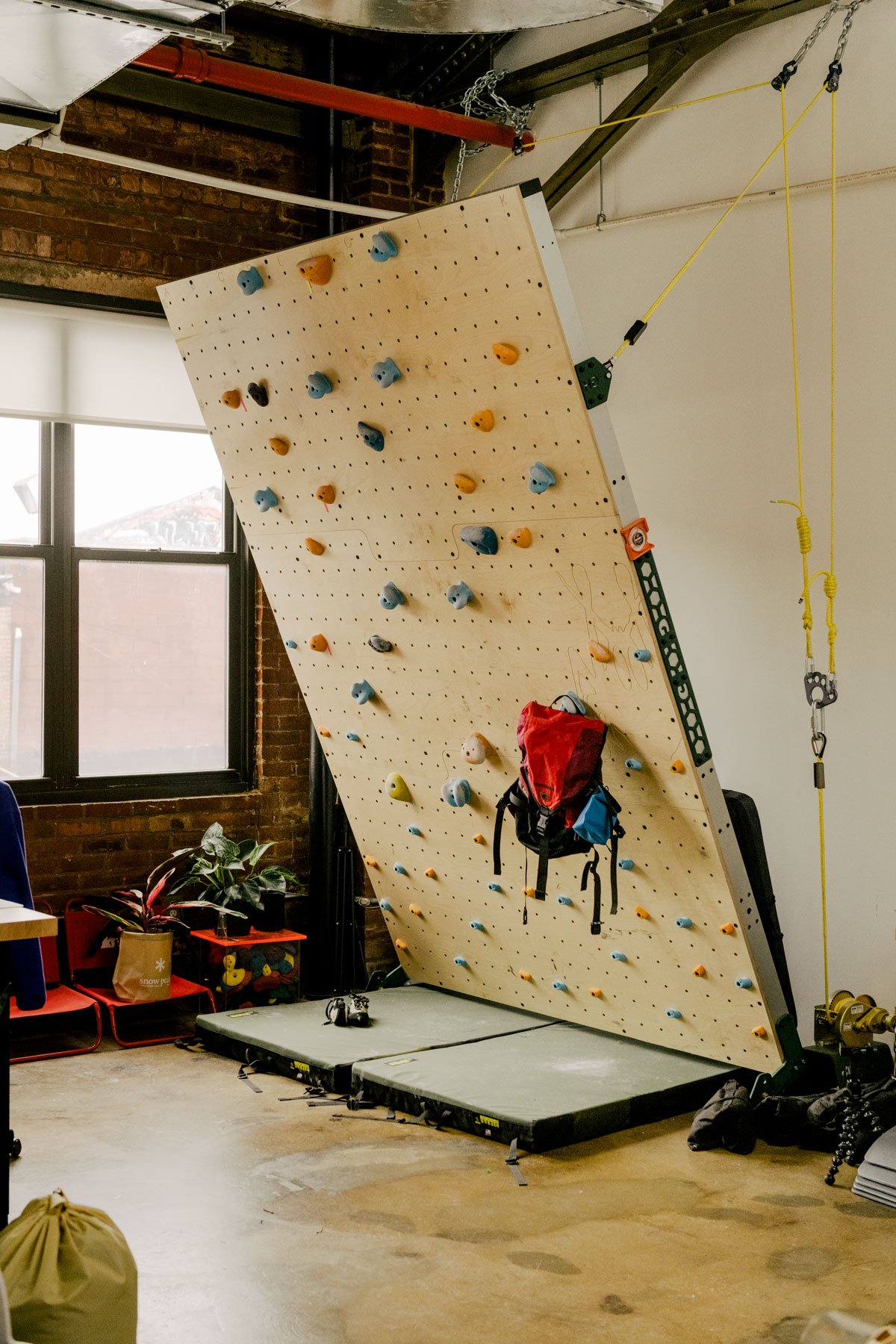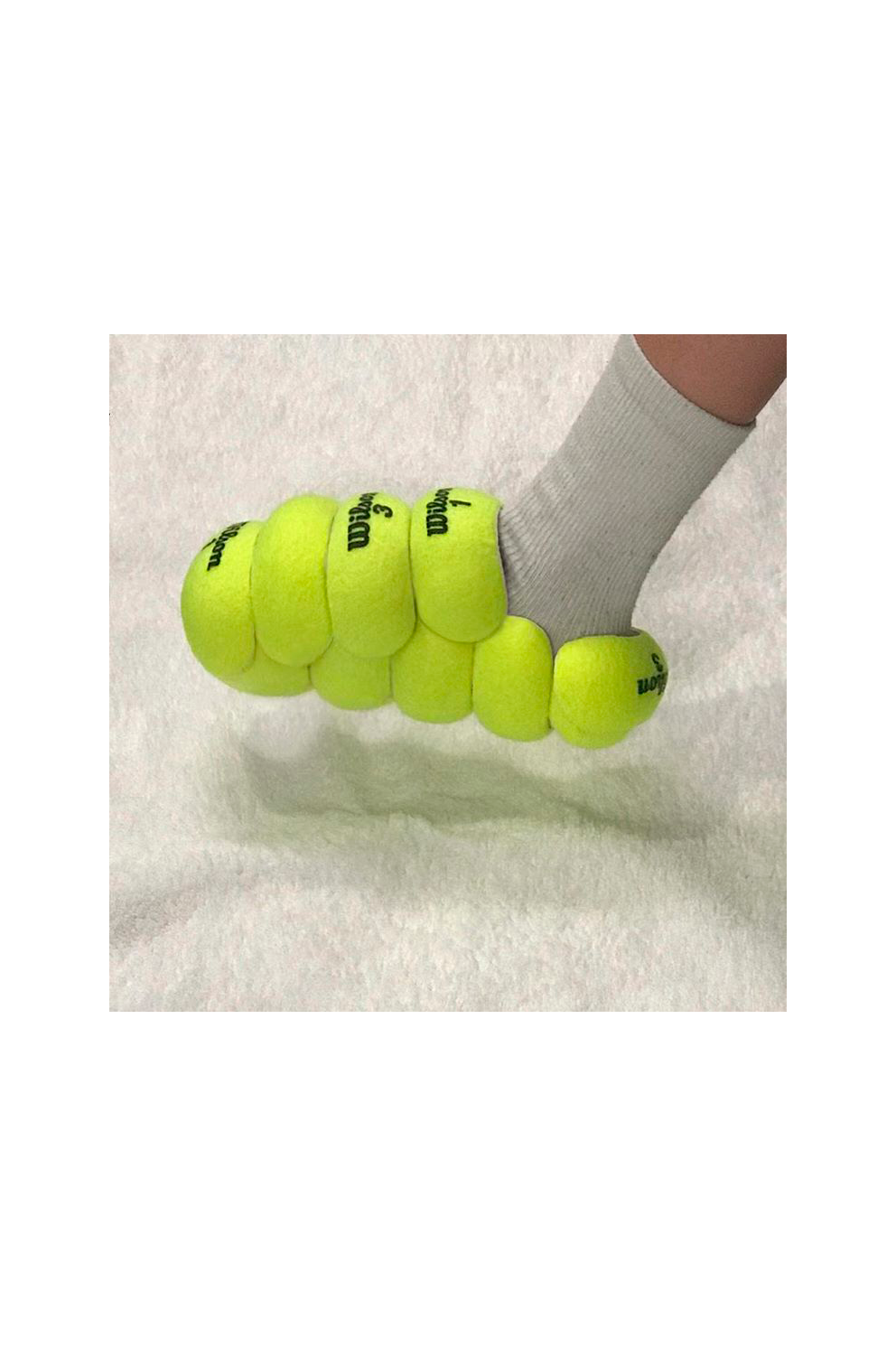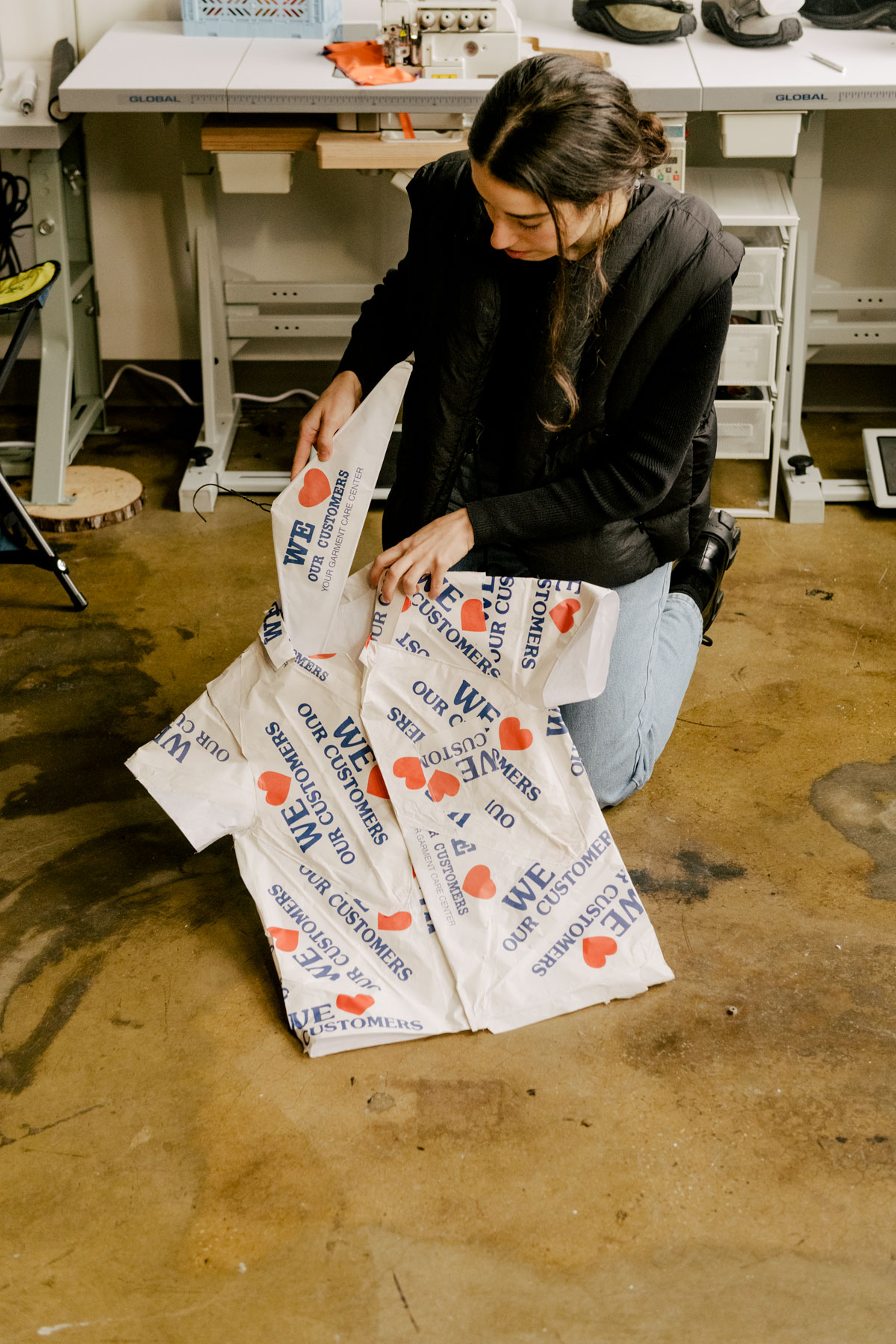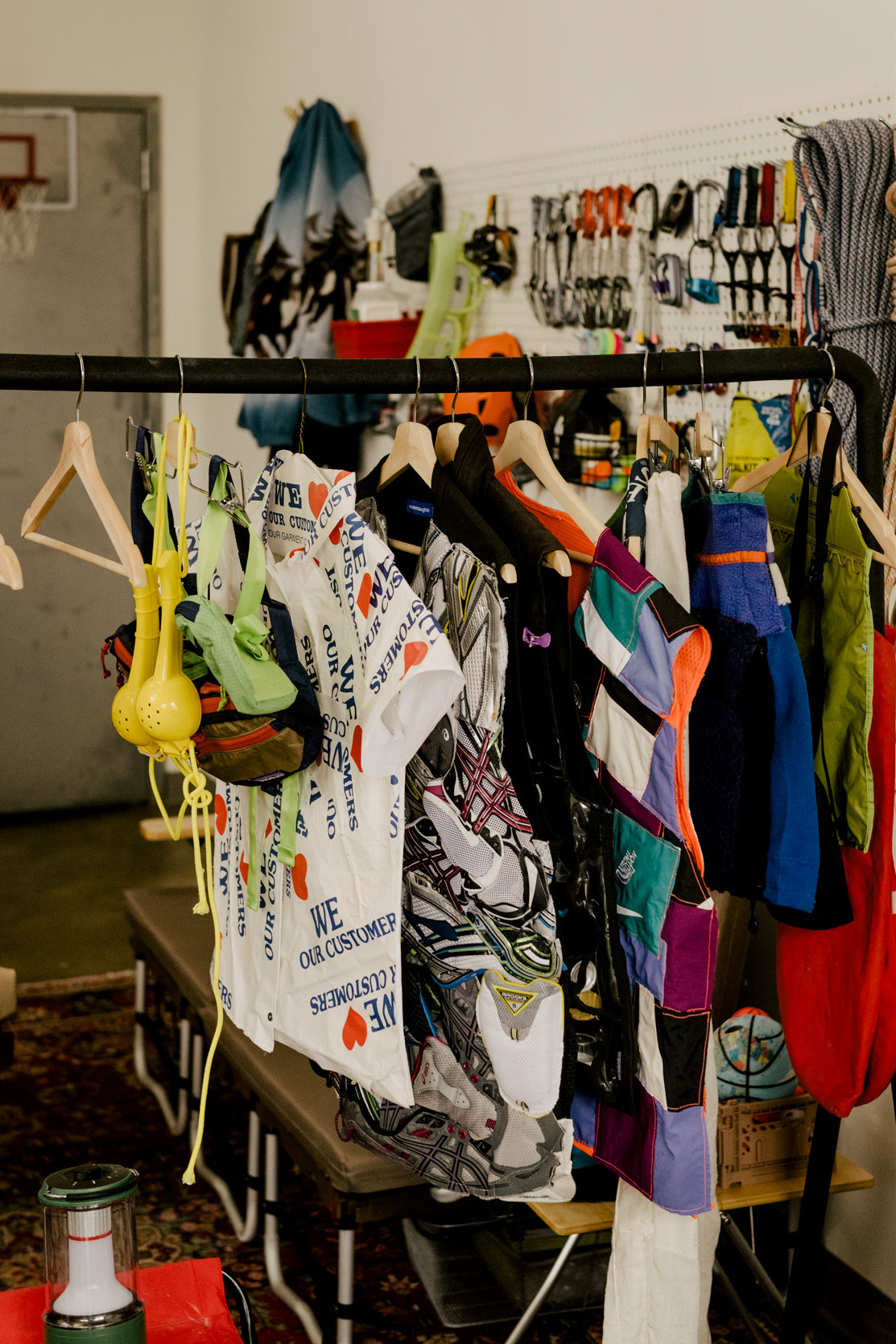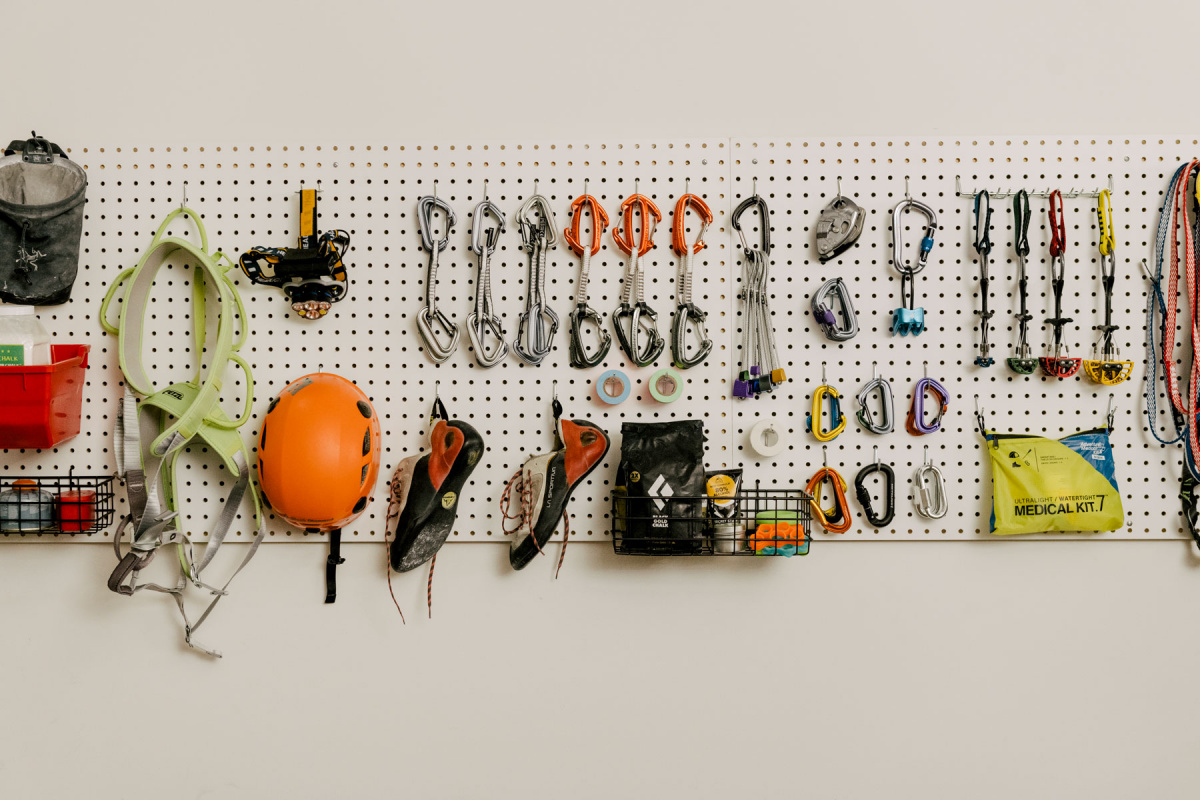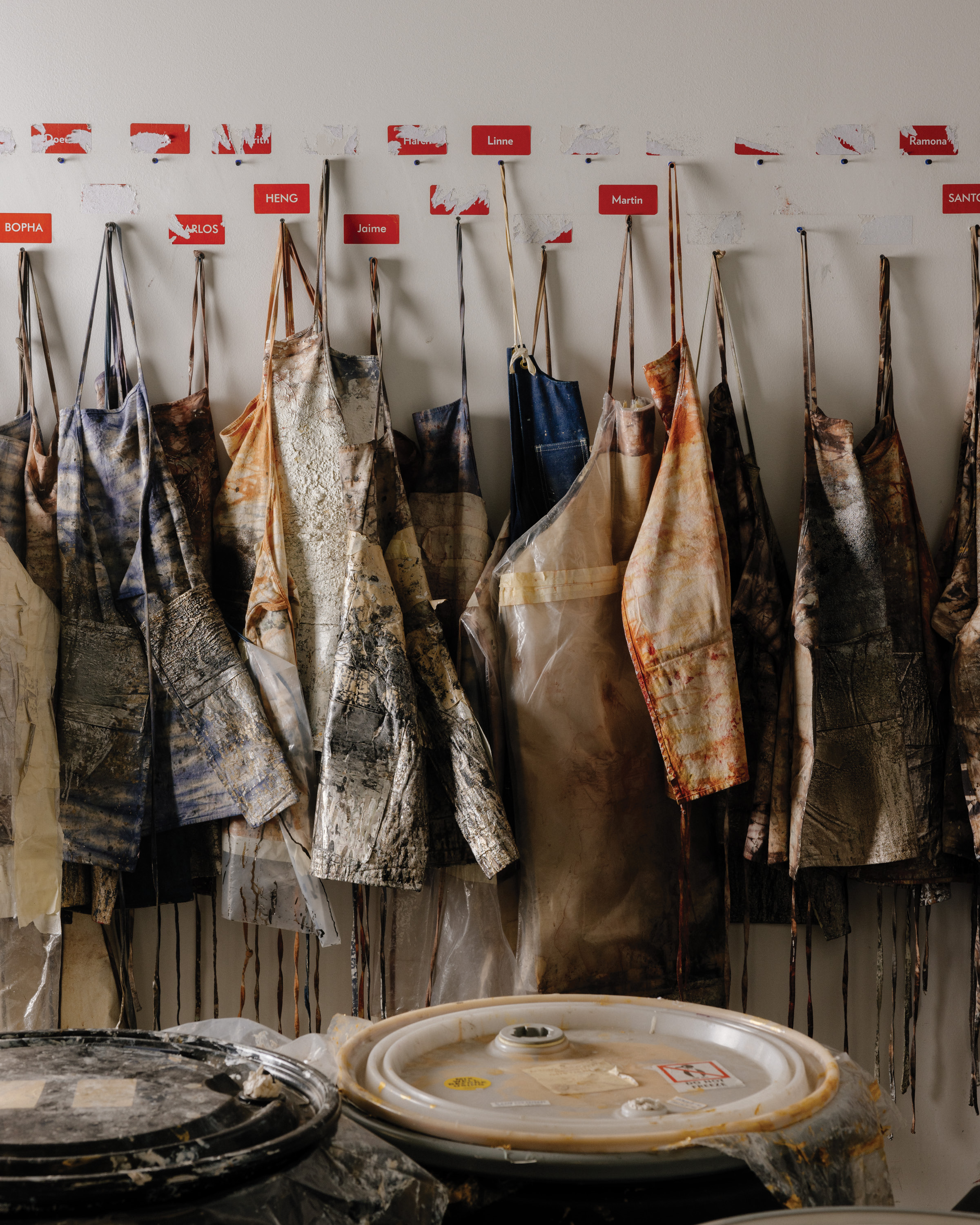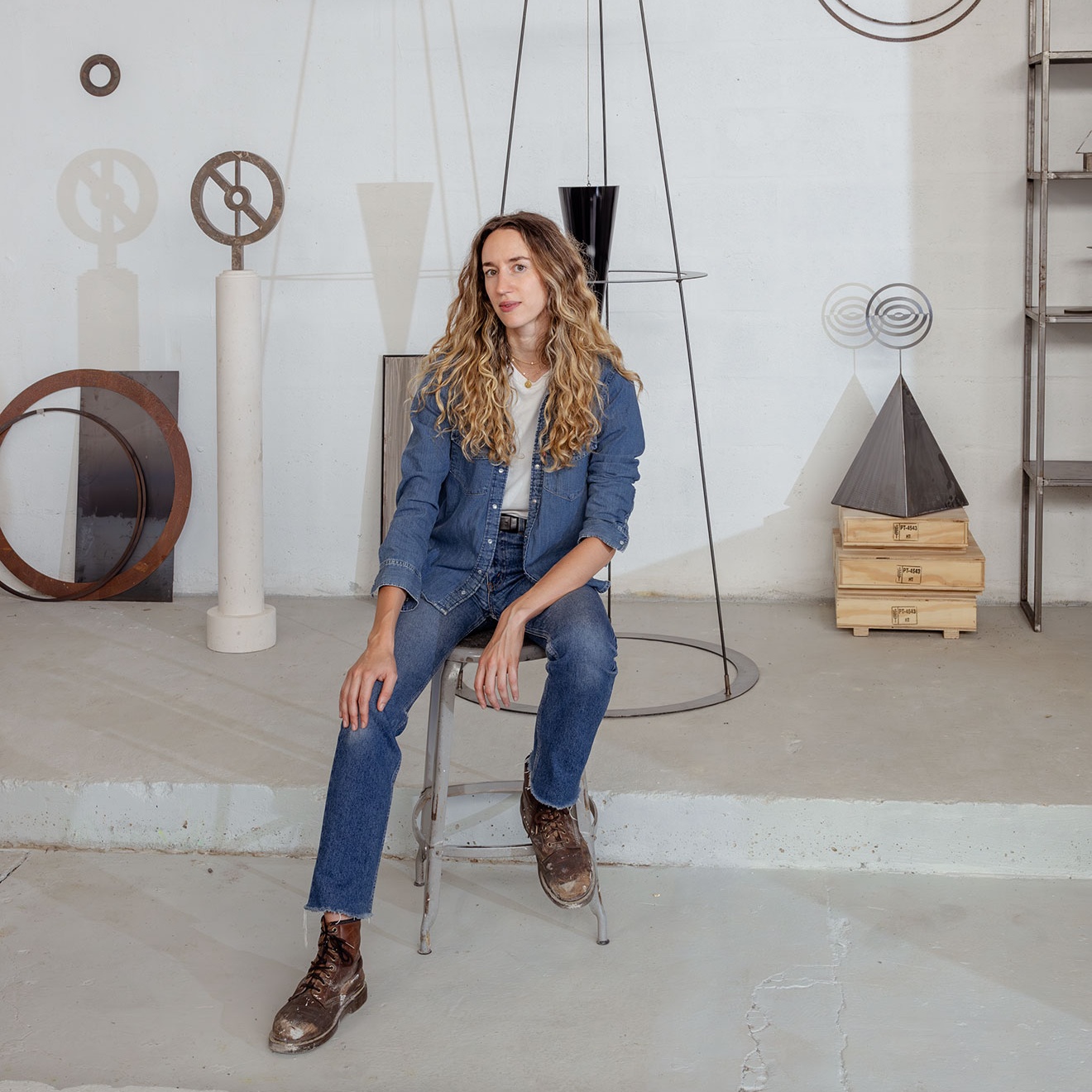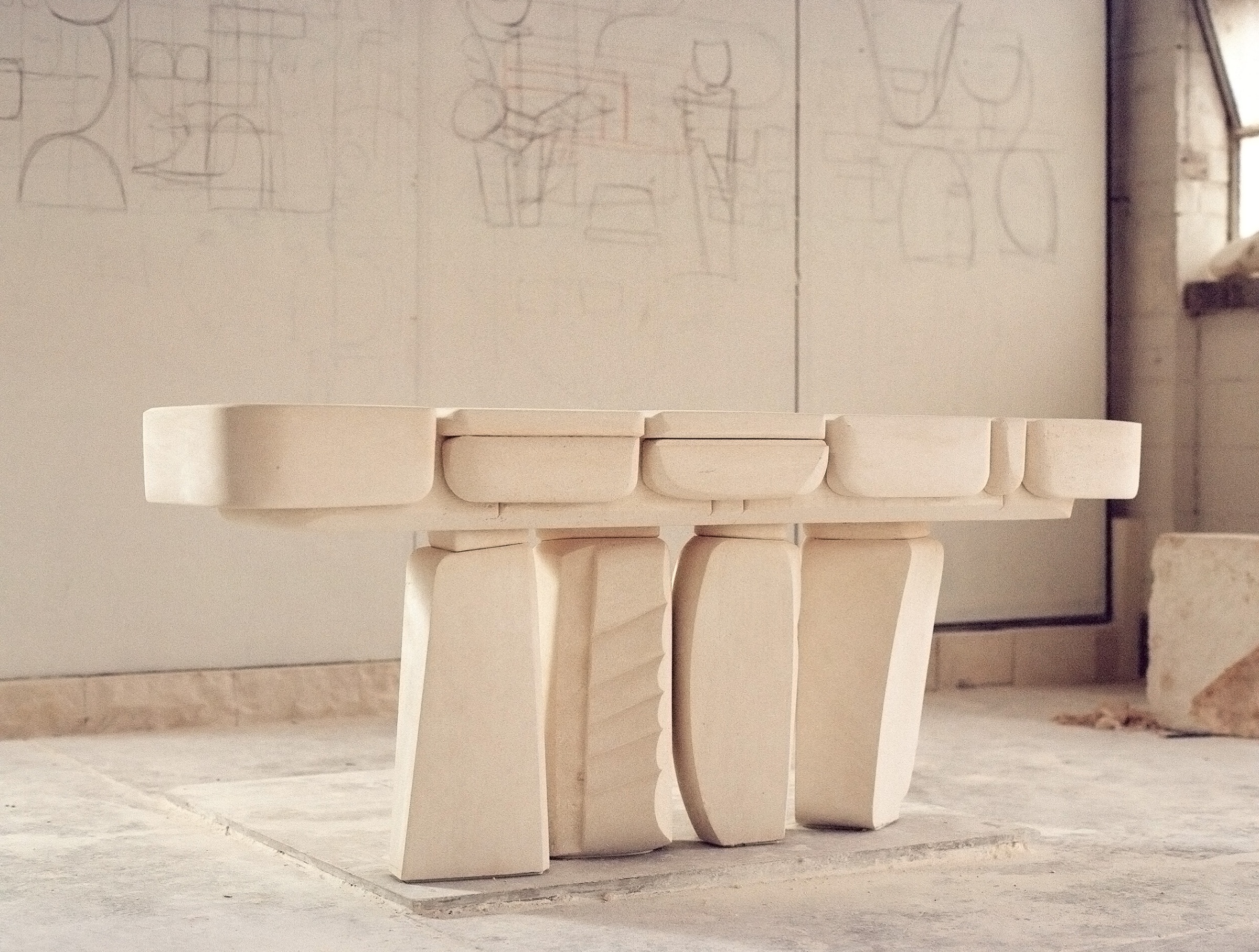The first thing you notice in Nicole McLaughlin’s Brooklyn studio is a giant rock climbing wall setup.
“Yes, I have a fully functioning rock climbing wall, which seems a little bit extra,” she admits. “But if I need a break it’s nice to work out and do a couple of climbs. It helps inspire me.”
Her work ethic, self-awareness, and gratitude of the massive viral moment she’s in is clear. “I have my dream studio. It’s like (the 1997 Robin Williams comedy about a mad scientist) Flubber. It’s the most insane laboratory. I have all the materials that I could ever desire.”
But running a successful upcycling studio, collaborating with the world’s biggest fashion brands, and building over a half-million social followers is far from what the 27-year-old set out to do in school.
Originally from New Jersey, Nicole went to East Stroudsburg University, a small school in the Poconos Mountains where she enrolled to study speech-language pathology. “I had a deaf boyfriend for quite a long time.” Once she arrived she realized her passion for sign language, of which she is fluent, and deaf culture didn’t align with her hopes for her career.
“I realized the reason I loved sign language so much was because it is a visual language. It’s beautiful to be able to communicate without ever having to speak.”
She quickly switched majors and crammed in visual courses like video production and photography. Soon after she joined the ranks of recent graduates scrambling for creative job experience. “I was looking for internships or any unpaid work where I could learn more.”
She found a yearlong apprenticeship opportunity at Reebok, applied, and was accepted. She packed her bags and moved to Jamaica Plain, a neighborhood in Boston.
- Nicole’s Brooklyn office is part rock climbing gym, part upcycling studio. Photo by Daniel Dorsa
Success or New Jersey?
At the time Reebok had a massive 42-acre campus in Canton, a half-hour commute south from Jamaica Plain. “It’s this huge building, one of those crazy things you read about where they have a basketball court inside and coffee stations all over.”
Nicole was living with two other people from the apprenticeship program at Reebok. She was self-conscious about her lack of experience. “I was really at the bottom of the barrel in terms of skillsets. There were 18 other apprentices, all coming from art schools. I was like, ‘Oh, I barely have an art degree.’” She found use for her fear of falling behind: “I used it to kick my own butt.”
Nicole began pulling longer and longer hours in the Reebok office. “I took on so much work. I wanted to be that person everyone could rely on.”
Her workday stretched until 8, then 9, then 10 o’clock at night. With a decent commute home and a manager who arrived early, she soon found it easier to just sleep at the office. “I had such an underdog mentality. I just wanted to prove myself. I was always volunteering for every single thing.”
At the end of the year just one apprentice would be hired full-time.
Nicole was motivated to not only keep up with the other apprentices but prove to management that she would be the best hire. “The apprentices were all fighting for that one position. I was so afraid this would be it for me, that I would have to move back home.”
She was terrified of failure. “Am I going to get sent back to New Jersey with my parents?”
She put her social life and long-distance relationship on hold.
At the end of the year a woman from Reebok’s HR department called Nicole in. She got the job.
She called her Mom to share the good news. “My parents knew this was a legit thing. I was really excited to tell them. But I was also exhausted. I was so, so tired. I took a deep breath and realized I needed to rest for a second because that was just the start of my career.”
- Nicole uses found materials in surprising ways for new takes on shoes and art. Photo by Daniel Dorsa
- In August 2019 Nicole moved into her Bushwick studio and hired a studio manager. Photo by Daniel Dorsa
With the security of a steady paycheck Nicole settled into a more regular, although still long, work week. Her curiosity began to expand beyond graphic design, looking for experience wherever she could find it.
“I was in everybody else’s project trying to see what was going on and trying to learn from everybody.” Reebok met her curiosity with more opportunity; Nicole was sent across Asia to visit factories and conduct market and materials research. “It was really inspiring.”
Boston: A Really Great Place to Dumpster Dive
By fall Reebok had completed a massive relocation, moving from their long-term home in Canton to a sleek, new development in Seaport, Boston. As Nicole got situated in her new office she realized she still had the keycard to the old one. Would it work? Always curious, she drove back out to Canton to find out.
It did.
“No one was in there, but they had left a ton of boxes, piles and piles of shoes, samples, scrap material, just trash. I started rummaging and dumpster diving.”
At that point Nicole wasn’t making anything, what she was seeing was literally just trash. “I kind of liked it. I thought maybe I could scan some of it for a graphics project.”
She found a pile of shoe uppers and wondered if she could find a different sole to attach it to. “I started to mix-and-match shoes. I don’t really know what motivated me, I just thought I would put it together and see what it looked like.”
Looking back at that moment Nicole just calls herself curious. “A lot of the time people are afraid to take that step, to start something with no intention.” As she puts it she “just started going crazy with it.”
Nicole was also coming to grips with the repercussions of having abandoned any efforts at building a social life in her new town. “I was very lonely in that time. I would channel it to explore these creative ideas. I also realized that when you work in a creative field it’s really hard to stay creative between 9am and 5pm, to only channel that creativity during those times.”
At nights her mind would fire up, relaxed by the lack of a specific brief or any project limitations. “There was no one to say, ‘You shouldn’t try to glue tissue paper together.’”
The Ikea Sandals
At night Nicole worked on her bedroom floor experimenting with found materials while listening to podcasts like Mary H.K. Choi’s Hey, Cool Job!
She liked listening to other creative types talk about their struggles. She recalls breaking down into tears from frustration with her work and her personal life as Mary interviewed GQ style editor Will Welch.
Her work hadn’t yet found its groove.
Shortly after that moment Nicole found a blue shoe sole while rummaging through the old office. She added a matching blue strap from an Ikea bag to make a sandal. “It just made sense to add the blue Ikea strap and make a sandal out of it. It was an aha moment.”
- Nicole goes to her rock climbing wall when she feels stuck. Photo by Daniel Dorsa
- One of Nicole’s most talked about works is her “tennis shoe,” crafted using old Wilson tennis balls. Photo by Nicole McLaughlin
She took a photo of it and posted it to Instagram. “I was really nervous. It was scary to let go of these secret bedroom projects and share them. Even though it was only a couple hundred people seeing it, it was very personal. It’s a vulnerable moment to share work when you don’t know what feedback you’re going to receive.”
It was 2017 and the Ikea sandal had a viral moment on Instagram.
Nicole didn’t make much of it. “It was exciting to know people liked it, but then it put pressure on what’s next.”
Nicole didn’t set out to grow a brand or build a following, so she did what few of us probably would with that kind of attention—she waited it out. For an entire year. “I was soul searching in that time. I felt like I needed to get better at creating things before I share them.”
Nicole spent the next year examining her process and improving her craft. She began to form a vision for her practice.
“I began to understand why I was doing these things. I understood the intention of taking a discarded item and turning it into something else, like household items we know and see and have experienced many times and then putting it into a different context.”
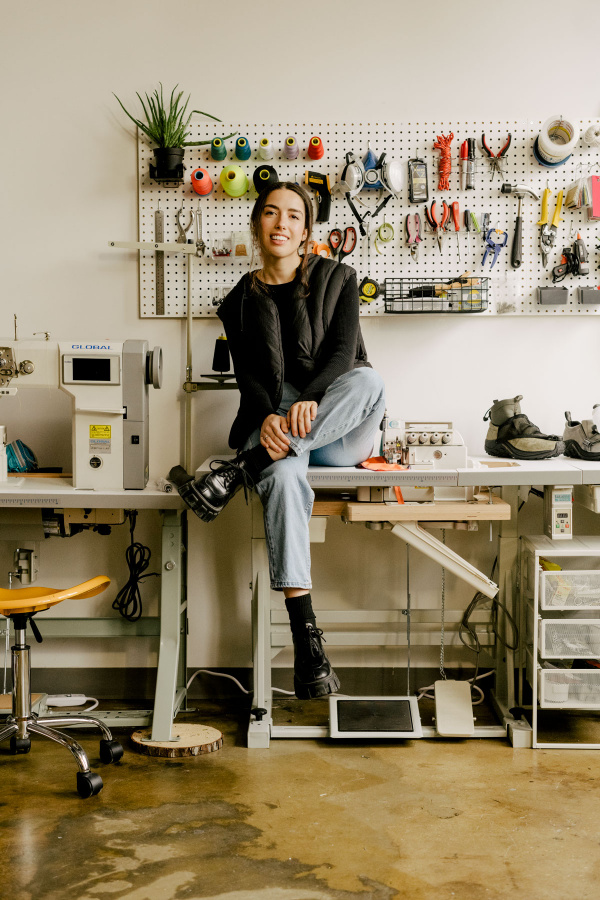
Photo by Daniel Dorsa
In July 2018 Nicole returned regularly to Instagram and shared a yellow shoe she reworked from an L.L. Bean fleece. Someone commented asking what year L.L. Bean had made that shoe and the notion that Nicole’s craft was convincing enough to be seen as a commercial-grade product gave her a “crazy feeling” of confidence.
She began to share more of her work, and her following exploded. By October she had 5,000 followers; by Christmas 50,000. “All these random strangers started to show up. You’re never really prepared for that.”
Nicole kept making work and people kept sharing it. “I was really invested in figuring out what it was that was making me inspired, by taking apart things and recreating them, Frankenstein-ing them into something else.”
Companies started to notice her work and began reaching out to her for collaboration and projects, but with her job at Reebok both her time and conflict of interest kept her from participating. Nicole had now been at Reebok for four years, including her apprenticeship.
An outside agency just happened to visit her team at Reebok and pitched Nicole as a possible partner for an upcoming project not knowing she was in the room. “It was really weird. A that point everyone was like, ‘You have a double life.’”
Then Adidas came knocking. They offered Nicole a few projects, one of which was in Shanghai. Then Foot Locker; they wanted to develop a residency-style program.
She did the math, and with these two projects plus her savings she could afford to quit Reebok and make it through at least the end of the year. “I couldn’t turn them down. I thought if I don’t do it now I might miss out. That’s the thing with social, and I’m still very realistic about that; you can have a really big moment and that can die out. You have to capitalize on the opportunities you have.”
Nicole quit the Reebok job she’d worked so hard to earn. “It was bittersweet,” she says.
She moved into a two-bedroom apartment in Brooklyn and dedicated her second tiny bedroom as a studio. “I didn’t realize how fast I was going to grow out of my home studio.”
Two projects turned into 20, and her followers now exceed a half-million. Vogue came calling, as did many other brands looking for collaboration and social media content.
- “I was really invested in figuring out what it was that was making me inspired, by taking apart things and recreating them, Frankenstein-ing them into something else.” Photo by Daniel Dorsa
- Artifacts from Nicole’s past projects hang inside her Bushwick studio. Photo by Daniel Dorsa
In August 2019 Nicole moved into her Bushwick studio and hired a studio manager. “I never, ever thought this was going to happen,” she admits.
She’s now viewed as a rework artist and upcycler—a term she didn’t know until the first Vogue article was published. “They were the first ones to coin me as an upcycler and a sustainable artist. I hadn’t even thought about it. I was like, ‘Everything I’m using is trash, all the stuff I was using from Reebok was trash, and all the stuff I’m buying now is from thrift stores. I guess they’re right.’”
Nicole started to research the term upcycle and connected with other rework artists like Gab Bois, thinking, “I can’t be called a sustainable designer not knowing anything about that space.” Her total lack of pretense comes across in her work.
It’s completely visual, bare, honest.
Brands now come to her to dream up sustainable solutions for their samples and deadstock. She holds demos and workshops and helps challenge the idea of what trash is.
She’s working with luxury brand Comme Si to reupholster sofas with deadstock socks and make furniture cushions from newspaper. She keeps a colorful tent in her studio to remind her of an idea to make in the future—a tent built from discarded windbreakers.
- Inside Nicole McLaughlin’s Brooklyn studio. Photo by Daniel Dorsa
Nicole understands the images and videos she makes of her work are just as important as the work itself.
She might be making a shoe from a volleyball, but the image of the shoe will have a much bigger life than the shoe itself. “I could have a really great idea, but if it’s not going to photograph well or doesn’t show the functionality making it special, it’s lost. In person it might be a totally different experience, but you’re dealing with a flat screen people look at for like two seconds. I really think about how everything is shot so it’s easily understood. Like you get it right away whether you like it or hate it. I like being able to give that feeling to people. Even if I’m teaching in China we don’t need to speak the same language. I think I do well at explaining things visually.”
A version of this article originally appeared in Sixtysix Issue 05 with the headline “How Sign Language and Dumpster Diving Launched Nicole McLaughlin’s Career.” Subscribe today.
